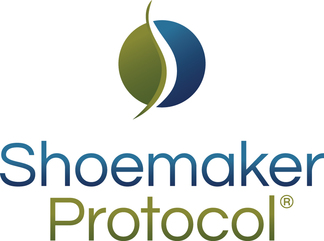Guidelines for Preventing Exposure (through the holidays and always)

It does take diligence and some proactive planning, but preventing mold exposure and thriving with CIRS is doable and possible, even through the busy holiday season.
There are apparent consistencies, practices, and behaviors among those who thrive with CIRS that differ from those who experience relapse. It is well worth the effort to implement the necessary practices and make them a part of your routine.
Tens of thousands of Shoemaker Protocol™ patients are thriving in life, and so can you.
Here are a few key ideas to help you enjoy healthy happy holidays and getaways, as well as long-term success:
ONE: Do your investigative work before you go. If it’s a building you enter often, run a HERTSMI-2 Test if possible.
Whether you’re visiting a hotel, restaurant, family, friends or having company in your home, always prepare as much as you can ahead of time. It often begins with calling the place you are visiting or your guests ahead of time and having clear communications about your situation. It’s also helpful to have someone go take a look ahead of time for you.
There are a few key points to cover during your initial conversation when visiting a new building:
- Ask to speak with a manager, owner, maintenance supervisor or someone who is familiar with the building’s history.
- Let them know you have strong physical symptoms and reactions to buildings that have had water intrusion damage.
- Instead of asking if there’s mold (this can put them on the defense), ask 1/ how old the building is and 2/ if there’s been “water intrusion damage.” Examples include, plumbing problems, flooding, roof leaks, sprinkler system issues, to name a few.
- Your best bet will be buildings that are under 12 years old. Nearly all buildings 20+ years have had some type of water damage. Find out the extent and if it was remediated to CIRS standards (typically not the case).
- Also avoid buildings with water features, fountains, or open terrariums.
- Without sounding critical, hold your ground and politely get all the facts you can to make an informed choice.
TWO: “Ask, Look, Smell” when you enter a new building. Assume a building is moldy until proven otherwise.
ASK… to speak to someone who knows the building history and ask them how old the building is and if there’s been water damage intrusion (see #1).
LOOK… around for evidence of water intrusion. Are there stained or discolored ceiling tiles, floors, or walls? Check the bathroom for grout and discoloration. Does the floor show buckling, or does the wallpaper show wrinkling? If you see any signs of water damage leave immediately, no more questions asked.
SMELL…when you’re nosing around be sure to notice any smells. If it smells musty it most likely is contaminated. Leave immediately.
Give it the 10-Minute Test… If the building passes the above initial tests, then give it 7-10 minutes to see if any symptoms develop. If you don’t have any signs of mold at this point chances are the building is safe for you, but stay tuned to any physical reactions especially within the next 72 hours.
If no symptoms arise within a week, then it is likely that the home or building is safe for you to visit.
What to do if symptoms show up:
If any symptoms appear at any time you are in the environment, leave as quickly as possible and take cholestyramine (CSM) and Welchol for a week monitoring changes in symptoms.
Some common symptoms to pay attention to are: feeling nauseated, developing a headache, shortness of breath, coughing, a sore throat, or feeling “queasy” or just not feeling well.
If you remain ill beyond one week of treatment then it is time to involve your physician and obtain labs to document where you are.
When taking any protocol medications, always consult with your Shoemaker Protocol™ Practitioner first for accurate dosages and for the best course of action for you.
THREE: Ask your practitioner about taking CSM (or Welchol) before you go
Many patients elect to use low-dose cholestyramine or Welchol before venturing into a new environment. If this is your choice, it’s recommended to take it at least two hours before you go into the new building. Continue on Welchol or cholestyramine for another 72 hours to see if new symptoms appear. Symptoms can arise in just a few minutes or kick in up to a week later.
If symptoms do arise, be sure to take note of the exact symptoms for future reference as they are typically reproduced each time you encounter a toxic environment. You will be able to recognize them quickly in the future.
Featured Resources for Community
The Surviving Mold Gift List
Give the precious gift of CIRS health & support with 10 gifts that keep on giving.
Shoemaker Protocol™ Quick Start:
The 3 initial steps to determine if mold is affecting you One of the most common questions we hear is, “how do I know if I have mold illness?” Rest assured, if you’re asking this question, you’ve come to the right place.
AirOasis The #1 CIRS Spring Cleaning Hack
Specialized air purifiers are revolutionizing deep cleaning, no matter the season. They’re a game changer for remediation purposes, too.
CIRS Spring Cleaning Checklist
Living with CIRS means cleaning and maintenance efforts must be ongoing and up to CIRS-safe standards. Spring is a perfect time to do a thorough examination and cleaning of the entire home and create a schedule for the year ahead.
CIRSX Annual Conference June 5-8, 2025 in Tempe, Arizona!
Early Bird Discount ends March 7!




